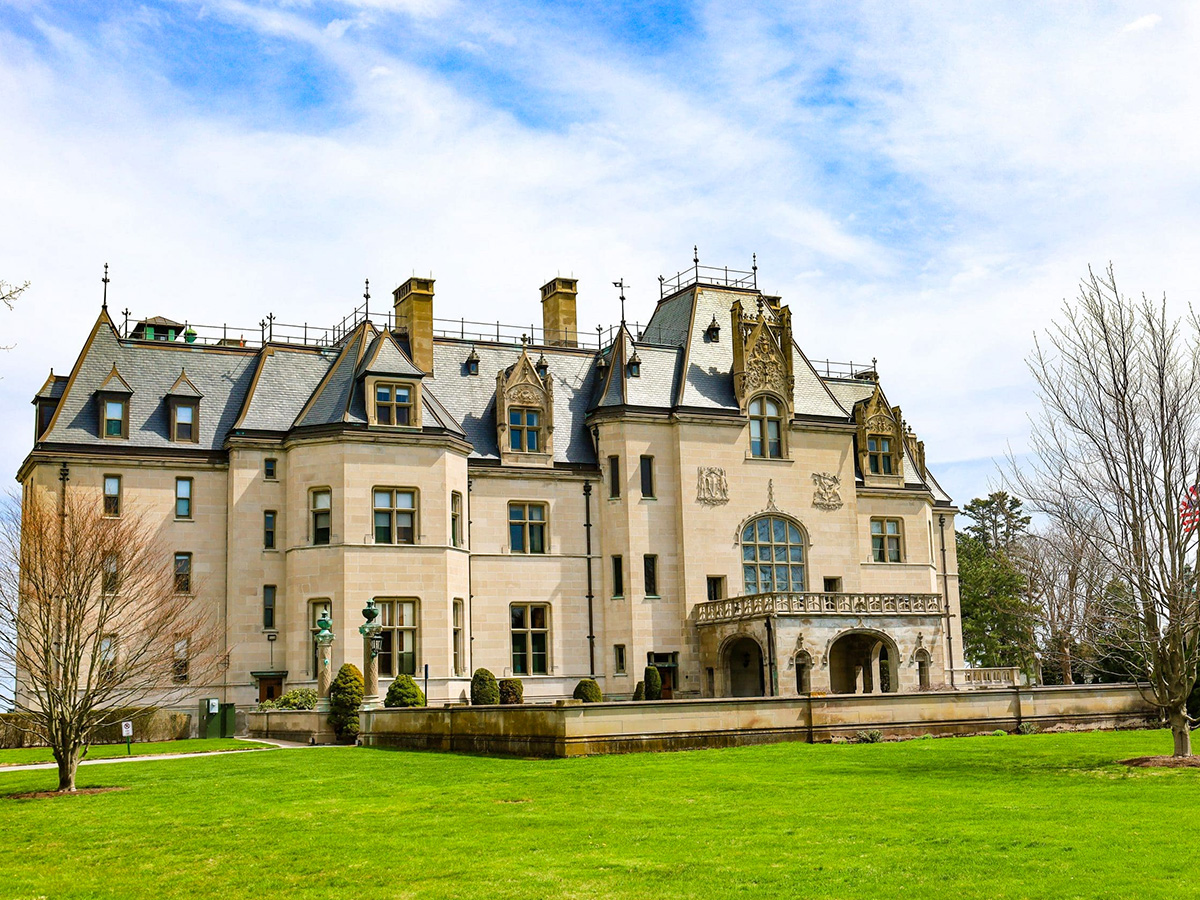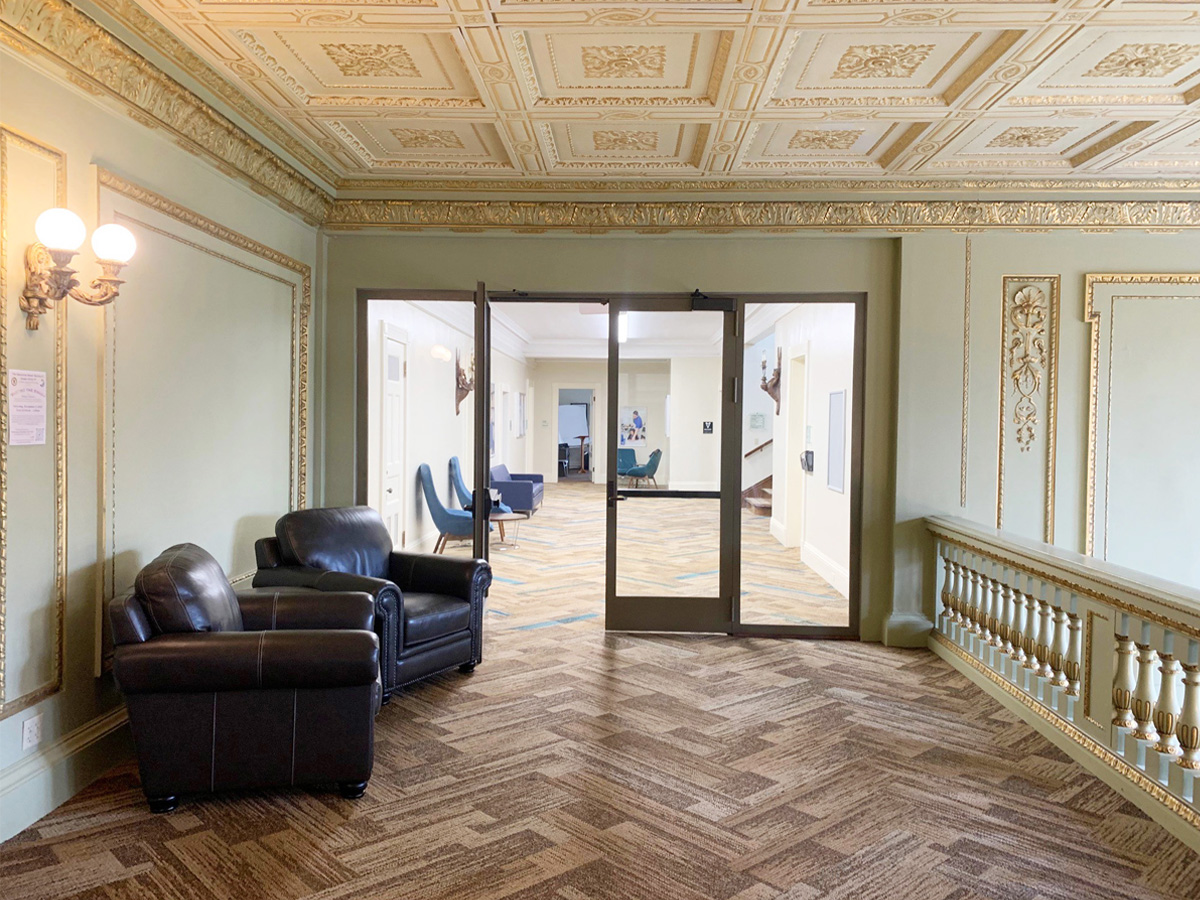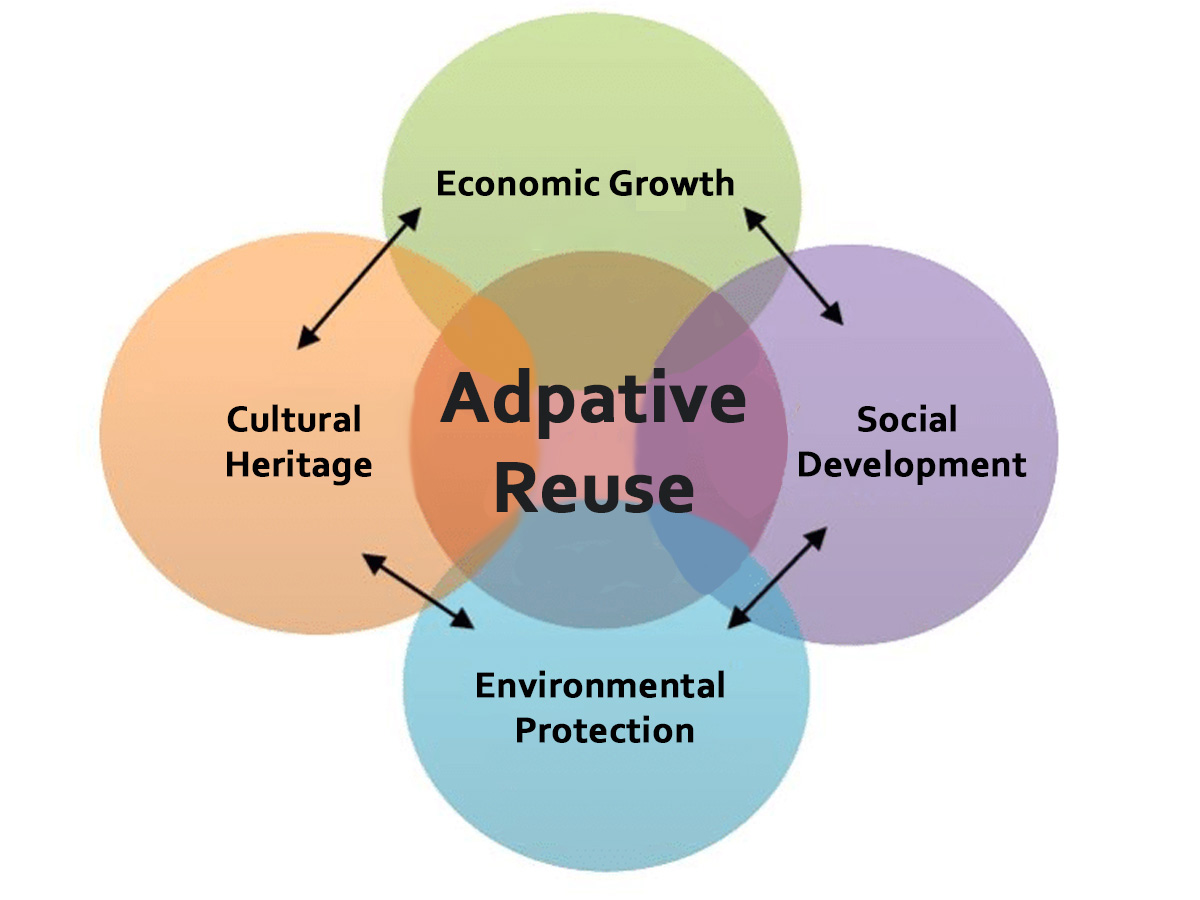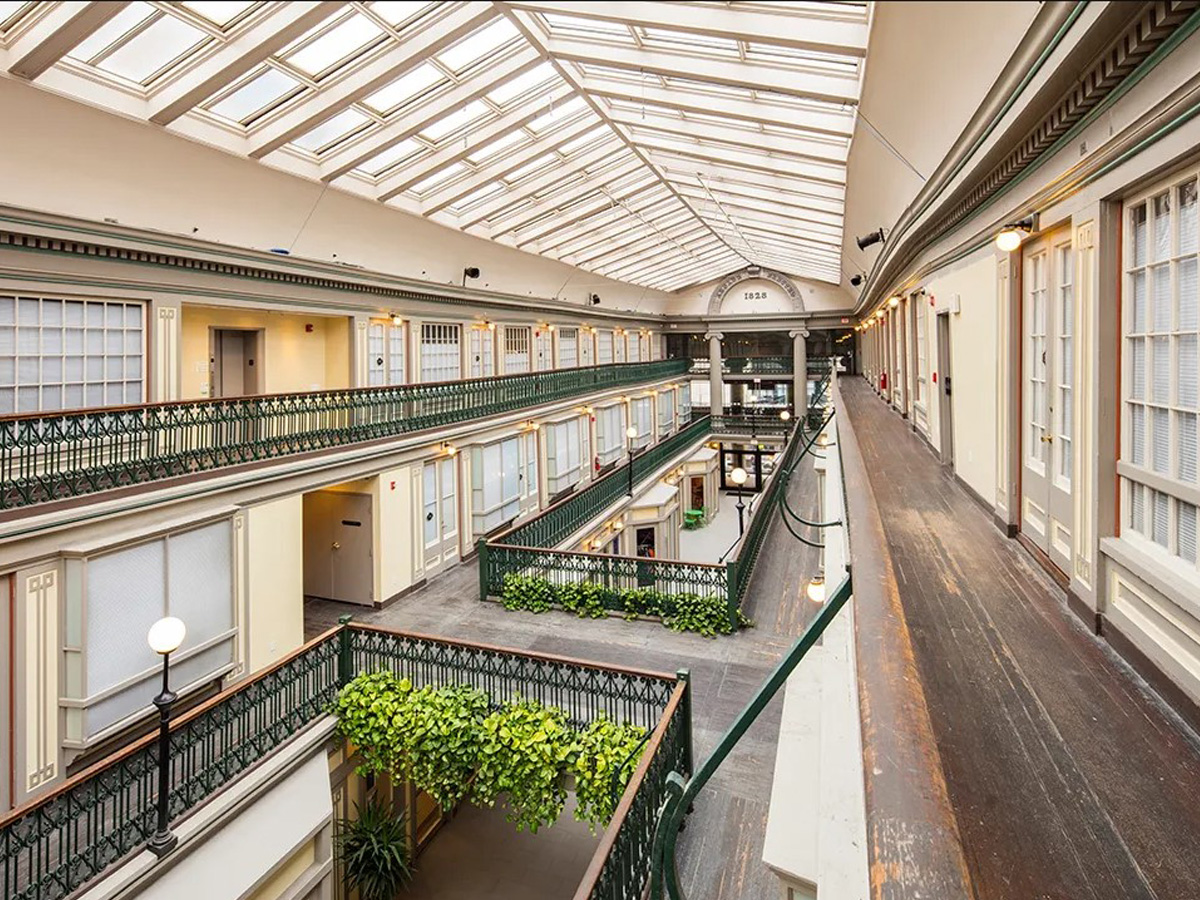Newport, Rhode Island, has long benefited from “Adaptive Reuse,” which is the practice of repurposing old buildings for purposes they were not originally intended for. Founded in 1639, Newport grew to be the fifth-largest city in the American colonies at the time of the Declaration of Independence. As a result, the community is blessed with many historic structures of both significance and beauty.

The Ochre Court Mansion now serves as a public gathering space and as an administrative building for Salve Regina University (Newport, RI). Our team is currently working on restoring several aspects of this historic masterpiece.
Similarly, during the Gilded Age, when Newport became a hub for a small economic elite, hundreds of enormous mansions were constructed, designed for a lifestyle that has long since faded. The Newport community, under the leadership of visionary historians like Katherine Warren and Ralph Carpenter, dedicated themselves to preserving these architectural gems by finding new uses for them. Grand mansions became house museums, college classrooms, art museums, and private clubhouses. Other mansions were converted into gracious condominiums. One notable building in town was converted from an Episcopal church to a Catholic church, then to an opera hall, later to a grand Jazz Age movie theater, and is now a performance center.

Once called The Vinland, this historic building is now called McAuley Hall (also located at Salve Regina University). Our team adapted the interior on several floors to serve the academic program.
However, adaptive reuse is no longer limited to the preservation of old buildings alone. As the economy changes rapidly, so do the needs of our buildings. Across the country, shopping malls and office buildings have become less necessary in the face of e-commerce and remote work. At the same time, a shortage of new housing construction has created a significant need for more residential spaces, often in the exact locations of these unused twentieth-century structures.
Converting these spaces into residences can be a complex undertaking, as it often requires significant renovations and upgrades to meet building codes and ensure livability. However, the benefits of adaptive reuse can be substantial on many levels.

Diagram showing how the economy, culture, and environment have a direct impact on adaptive reuse.
Environmental sustainability: Adaptive reuse reduces waste and minimizes the environmental impact associated with new construction. By repurposing existing structures, developers can avoid the need to demolish and rebuild, which generates significant amounts of waste and pollution.
Economic revitalization: Adaptive reuse can stimulate local economies by attracting new residents and businesses to underutilized areas. This can lead to increased property values, job creation, and more vibrant communities.
Preservation of history and culture: Adaptive reuse helps preserve the historical and architectural character of a building or neighborhood. By retaining and repurposing older structures, communities can maintain a connection to their past and celebrate their unique heritage—even if those structures were built only forty or fifty years ago.
Creation of unique living spaces: Adaptive reuse can create unique and interesting living spaces not typically found in new construction. For example, former office buildings may feature large windows, high ceilings, and open floor plans, while former industrial spaces may have exposed brick walls and other architectural details.
In addition to converting shopping malls and office buildings into residences, adaptive reuse can also be used to repurpose other types of structures, such as schools, hospitals, and factories. These projects can create a variety of new spaces, including apartments, condominiums, townhouses, and mixed-use developments.

The Arcade in Providence, RI once served as one of the largest commercial spaces in the country, but has been adapted into micro living units. Image credit: Arcade Providence.
Adaptive reuse is not without its challenges. Developers must carefully consider the structural integrity of the existing building, as well as any environmental hazards that may be present. They must also work closely with local officials to ensure that their project meets all applicable building codes and regulations. At A4 Architecture, we love the challenge of transforming old (and not-so-old) buildings into beautiful and functional spaces that better meet the needs of today’s residents!
Ross Cann is an author, historian, teacher and founding architect at A4 Architecture in Newport RI. He has been involved in countless adaptive reuse projects in Rhode Island and elsewhere over his thirty-year career including many projects at various Preservation Society properties, the Newport Casino, among many others.
